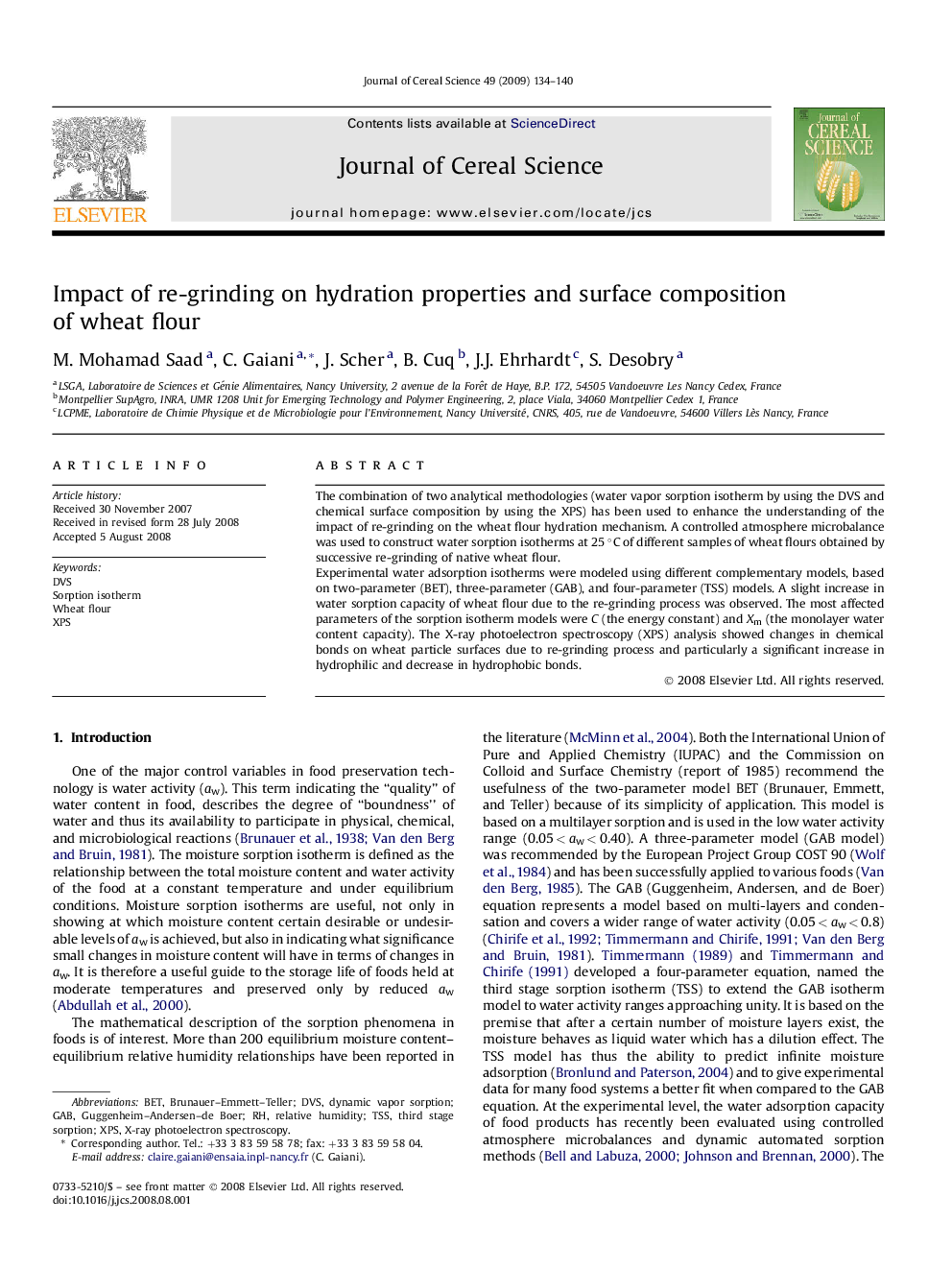| Article ID | Journal | Published Year | Pages | File Type |
|---|---|---|---|---|
| 4516540 | Journal of Cereal Science | 2009 | 7 Pages |
The combination of two analytical methodologies (water vapor sorption isotherm by using the DVS and chemical surface composition by using the XPS) has been used to enhance the understanding of the impact of re-grinding on the wheat flour hydration mechanism. A controlled atmosphere microbalance was used to construct water sorption isotherms at 25 °C of different samples of wheat flours obtained by successive re-grinding of native wheat flour.Experimental water adsorption isotherms were modeled using different complementary models, based on two-parameter (BET), three-parameter (GAB), and four-parameter (TSS) models. A slight increase in water sorption capacity of wheat flour due to the re-grinding process was observed. The most affected parameters of the sorption isotherm models were C (the energy constant) and Xm (the monolayer water content capacity). The X-ray photoelectron spectroscopy (XPS) analysis showed changes in chemical bonds on wheat particle surfaces due to re-grinding process and particularly a significant increase in hydrophilic and decrease in hydrophobic bonds.
